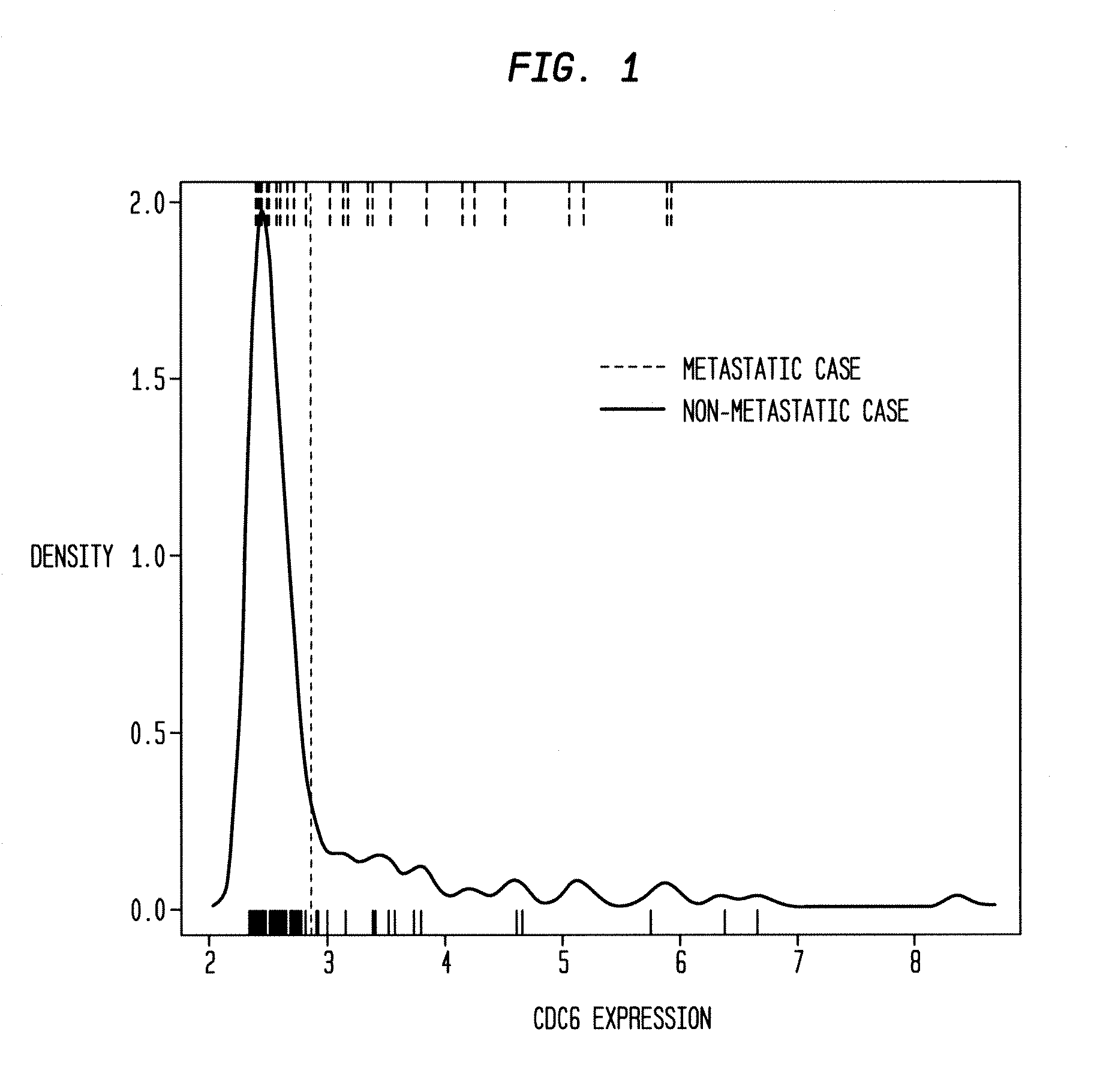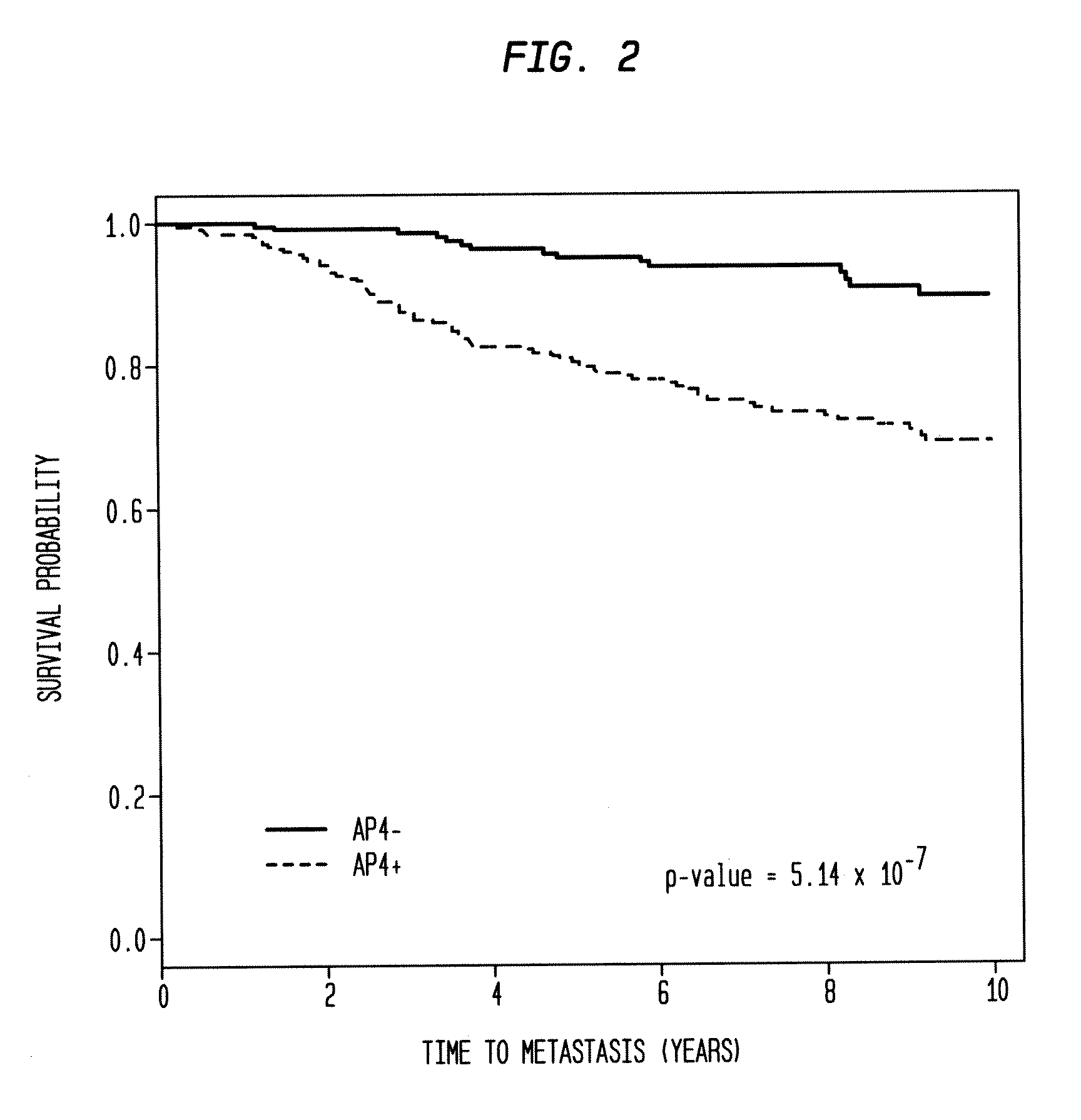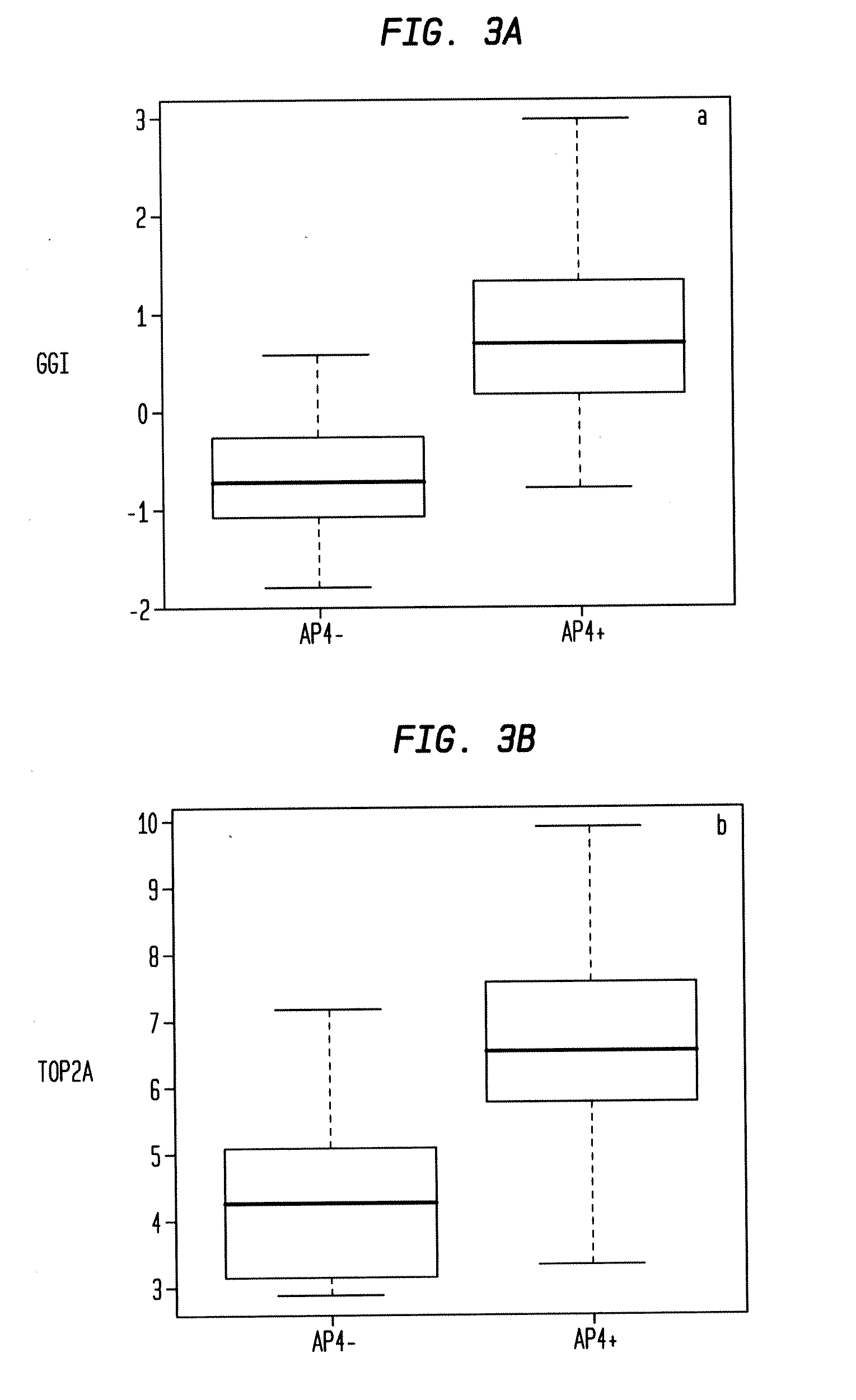Accelerated Progression Relapse Test
a relapse and accelerated technology, applied in the field of disease prognostic methods, can solve the problems of patient likely to benefit and patient likely to benefit, and achieve the effect of high hazard ratio for metastasis-free survival
- Summary
- Abstract
- Description
- Claims
- Application Information
AI Technical Summary
Benefits of technology
Problems solved by technology
Method used
Image
Examples
example 1
[0102]The present example is provided to define the statistical tools and models and data sets employed is deriving the present methods.
[0103]The microarray datasets used here were obtained from the Gene Expression Omnibus (http: / / www.ncbi.nlm.nih.gov / geo / ), specifically, GSE4922, GSE6532, GSE7390, GSE9195, GSE11121. Two independent cohorts were obtained from GSE6532, for a total of 6 cohorts, with 813 estrogen receptor+(ER+) samples. None of the patients received adjuvant chemotherapy. A summary of the clinical traits of the patients is found in Table 2 below. Expression values were computed from raw data with gcrma26. The language R (http: / / www.r-project.org / ) was used for all statistical analyses. Mixture models were fit using the flexmix27 R package. The R package survival was used for all survival models. The proportional hazard condition was verified with the cox.zph function. A Cox proportional hazard model (CPH) was considered statistically significant if the p-value of the ...
example 2
Methods
[0106](a) Patient Cohorts and Data Analysis
[0107]Estrogen receptor status was determined here from expression values for a probe for ESR1. In all cohorts, the survival endpoint used was distant metastasis, except in GSE4922, in which it was any recurrence. All survival data was censored to 10 years so as not to distort the data due to different study lengths. In each cohort, the mRNA was extracted from primary tumors and hybridized to an array from the Affymetrix GeneChip platform hgul33a or hgul33plus2.
[0108](b) GCRMA is Used to Calculate Expression Values
[0109]Expression values are computed from the CEL files with GCRMA (Wu 2004). Many of the genes central to proliferation are unexpressed or expressed at a low baseline level in normal tissue. Given the prominent role played by proliferation in breast cancer progression, it is important to measure low concentration mRNA levels as precisely as possible. It was shown in (Irizarry 2006) with spike-in data that GCRMA has superio...
example 3
Molecular Probes
[0125]A set of probes to serve as candidates for inclusion in the model is selected as follows. Let Yup be the probes in Y that are positively correlated with relapse. Let Pup be the probes p in Yup such that (1) p is multi-state in both UPPS+ and TRANSBIG+, and (2) the binary variable representing p is significant in a CPH in UPPS+ and TRANSBIG+. A set Pdn of probes negatively correlated with relapse is derived correspondingly. The set of candidate probes P is the union of Pup and Pdn. Executing this procedure yields a set of 16 probes.
[0126]An optimal survival model derived from P in UPPS+ is generated by CDT1 (209832_s_at), SPAG5 (203145_at), CDC6 (203967_at), and SNRPA1 (216977_x_at). In TRANSBIG+ an optimal survival model derived from P is generated by MKI67 (212020_s_at), SPAG5 (203145_at), PLK1 (202240_at), SNRPA1 (216977_x_at), and MK167 (212022_s_at). In both cases the probes are all positively correlated with relapse, hence the good prognosis group for any ...
PUM
| Property | Measurement | Unit |
|---|---|---|
| Level | aaaaa | aaaaa |
| Density distribution function | aaaaa | aaaaa |
Abstract
Description
Claims
Application Information
 Login to View More
Login to View More - R&D
- Intellectual Property
- Life Sciences
- Materials
- Tech Scout
- Unparalleled Data Quality
- Higher Quality Content
- 60% Fewer Hallucinations
Browse by: Latest US Patents, China's latest patents, Technical Efficacy Thesaurus, Application Domain, Technology Topic, Popular Technical Reports.
© 2025 PatSnap. All rights reserved.Legal|Privacy policy|Modern Slavery Act Transparency Statement|Sitemap|About US| Contact US: help@patsnap.com



